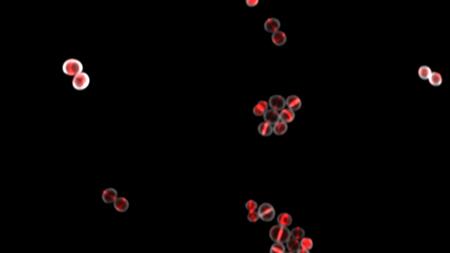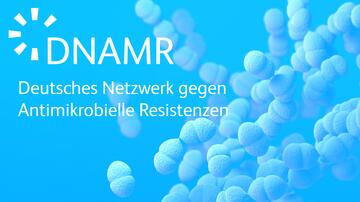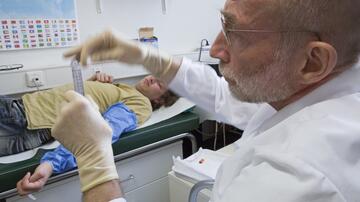Blocking of cell wall formation by antibiotics stops bacterial cell division
The process of bacterial cell division under the microscope: The red fluorescent cell division protein FtsZ assembles the so-called Z-ring in the centre of the Staphylococcus aureus cell.
We still do not understand exactly how antibiotics kill bacteria. However, this understanding is necessary if we want to develop new antibiotics. And that is precisely what is urgently needed, because bacteria are currently showing more and more resistance to existing antibiotics. Therefore, researchers from the University Hospital Bonn, the University of Bonn and the German Center for Infection Research (DZIF) used high-performance microscopy to observe the effects of different antibiotics on the cell division of Staphylococcus aureus. They found that the biosynthesis of peptidoglycan—core component of the bacterial cell wall—is the driving force during the entire process of cell division. In addition, they clarified how exactly different antibiotics block cell division within a few minutes. The results have now been published in the journal Science Advances.
The bacterial cell wall maintains the shape and integrity of unicellular organisms. Cell wall synthesis plays a key role in bacterial growth. Thereby, the cell division protein FtsZ forms the so-called Z-ring in the center of the cell, thus initiating the division process. A new cell wall is formed there, for which peptidoglycan is produced as the core component. This constriction thus gives rise to two identical daughter cells.
Fluorescent proteins in Staphylococcus aureus under the microscope.
The research team selected the bacterium Staphylococcus aureus—one of the most dangerous human pathogenic bacteria—as the model organism for their study. The focus was on the influence of antibiotics that inhibit peptidoglycan synthesis on cell division.
"We found a rapid and strong effect of oxacillin and the glycopeptide antibiotics vancomycin and telavacin on cell division. The cell division protein FtsZ served as a marker here and was observed by us," says Jan-Samuel Puls, a PhD student at the University Hospital Bonn and first author of the study.
For this purpose, FtsZ was fluorescently labeled alongside other proteins. Using super-resolution microscopy, the researchers analysed the effects on individual living bacterial cells over time. They also established an automated image analysis for microscopy images, which allowed them to quickly analyse all cells in the sample under investigation.
"Staphylococcus aureus has a diameter of only about one micrometer, which is one-thousandth of a millimeter. This makes microscopy particularly challenging," says DZIF-scientist Dr. Fabian Grein, a junior research group leader at the Institute of Pharmaceutical Microbiology of the University Hospital Bonn.
Antibiotics effects on cell wall biosynthesis machinery inhibit cell division immediately
Contrary to previous assumptions that peptidoglycan synthesis is essential only during a specific part of the cell division process, the Bonn research team found that peptidoglycan formation drives the entire process. The team showed that inhibition of cell wall assembly by glycopeptide antibiotics in Staphylococcus aureus occurs rapidly and with a dramatic effect on cell division. In addition, they clarified in detail the specific role of essential penicillin-binding protein 2 (PBP2), which links cell wall components, in cell division. The β-lactam antibiotic oxacillin prevents the proper localisation of this protein.
"This means that PBP2 does not get to the place where it is needed. As a result, the cell can't divide," Grein says. "Importantly, this all happens immediately after addition of the antibiotics. So the first cellular effects, which had not been studied very intensively so far, are crucial."
In view of the alarming increase in antibiotic resistance worldwide, he hopes the study results will provide a better understanding of exactly how these agents function at the cellular level, and thus a key to the development of new antibiotics.
Source: Press release of the University Hospital Bonn (in German)




